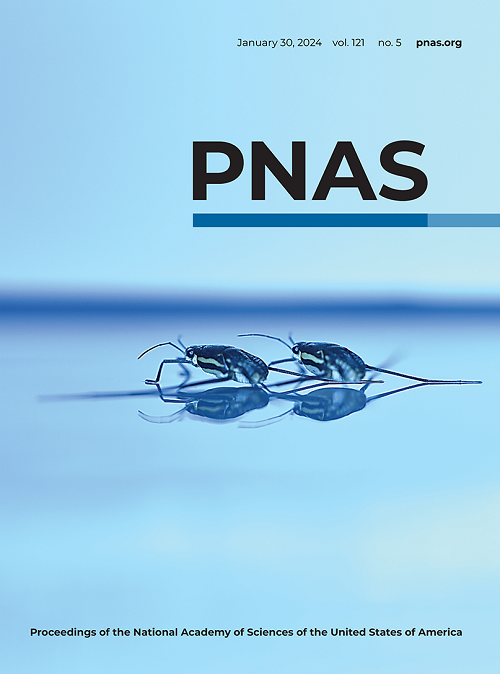血管蛋白-肌动蛋白解结合动力学的直接计算评估揭示了捕获键行为
IF 9.4
1区 综合性期刊
Q1 MULTIDISCIPLINARY SCIENCES
Proceedings of the National Academy of Sciences of the United States of America
Pub Date : 2025-05-21
DOI:10.1073/pnas.2425982122
引用次数: 0
摘要
长春素与细胞骨架聚合物肌动蛋白形成捕获键,在施加力时显示出增加的键寿命。值得注意的是,这种行为取决于施加力的方向,这对细胞机械转导具有重要意义。在这项工作中,我们提出了一项全面的分子动力学模拟研究,采用增强的采样技术来研究这种现象在生理相关力下的热力学、动力学和机械方面。我们剖析了一个捕获键机制,其中力在弱或强结合状态之间移动。我们的研究结果表明,这些状态的模型具有与单分子研究一致的解键时间,并且表明两者都具有一些内在的捕获键行为。我们对这种行为提供了原子的见解,并展示了定向拉力如何促进强或弱状态。至关重要的是,我们的策略可以扩展到测量一般生物分子系统中难以捕获的小机械力的影响,以及更具体地涉及机械转导的影响。本文章由计算机程序翻译,如有差异,请以英文原文为准。
A direct computational assessment of vinculin–actin unbinding kinetics reveals catch-bonding behavior
Vinculin forms a catch bond with the cytoskeletal polymer actin, displaying an increased bond lifetime upon force application. Notably, this behavior depends on the direction of the applied force, which has significant implications for cellular mechanotransduction. In this work, we present a comprehensive molecular dynamics simulation study, employing enhanced sampling techniques to investigate the thermodynamic, kinetic, and mechanistic aspects of this phenomenon at physiologically relevant forces. We dissect a catch bond mechanism in which force shifts vinculin between either a weakly or strongly bound state. Our results demonstrate that models for these states have unbinding times consistent with those from single-molecule studies, and suggest that both have some intrinsic catch-bonding behavior. We provide atomistic insight into this behavior, and show how a directional pulling force can promote the strong or weak state. Crucially, our strategy can be extended to measure the difficult-to-capture effects of small mechanical forces on biomolecular systems in general, and those involved in mechanotransduction more specifically.
求助全文
通过发布文献求助,成功后即可免费获取论文全文。
去求助
来源期刊
CiteScore
19.00
自引率
0.90%
发文量
3575
审稿时长
2.5 months
期刊介绍:
The Proceedings of the National Academy of Sciences (PNAS), a peer-reviewed journal of the National Academy of Sciences (NAS), serves as an authoritative source for high-impact, original research across the biological, physical, and social sciences. With a global scope, the journal welcomes submissions from researchers worldwide, making it an inclusive platform for advancing scientific knowledge.

 求助内容:
求助内容: 应助结果提醒方式:
应助结果提醒方式:


